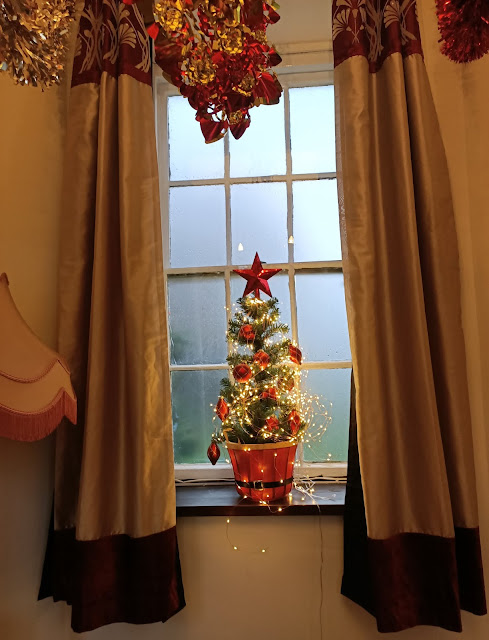Medieval lawns, and other matters
 |
| New editions to my garden book collection |
We took a well-earned rest from the gardens of Betley Court this week, but my mind was never far from the growing list of jobs that need doing around the place. As a distraction, we spent a day visiting the famous British ‘book town’ of Hay-on-Wye, just over the border into Wales. There are reputedly more than thirty bookshops in the town, with many specialising in rare, second-hand and remaindered books. Nigel and I are both horrendous bibliophiles, so it is always a treat to visit.
Naturally, one of my book-enthusiasms is of course the
gardening book, be it a lavishly-illustrated coffee table book about photogenic
and famous gardens around the world, a thoughtful book about saving the planet through
the art of gardening, or indeed, a little long-forgotten publication on some
obscure niche area of horticulture. At this point, I should confess, I bought eight
books on gardening on this trip. I’ve read two already, and another (an
anthology of poetry about gardens from the lovely people at Candlestick Press) was
mailed to a gardening friend. So, I don’t think should count.
Amongst my latest book haul are two rather lovely titles.
The first is a 1958 first edition of Dorothea Eastwood’s ‘The Story of our
Gardens’ (a fiver – bargain!). It’s the horticultural saga of British gardens,
from Roman, medieval and Renaissance gardens, to the social upheavals (like the
two World Wars), and technological innovation that brought changes to how we
garden in the modern era. The second is
Tom Fort’s 2000 ode to mowing, ‘Our Love Affair with the Lawn’. Despite the 42-year
gap between them being published, both touched on the same subject, the ‘medieval
lawn’, a term I’d not heard before, but that had an instant resonance to me.
 |
| A depiction of a 'Medieval lawn', from"Virgin & Child and Four Angels" by Gerard David, c.1510-15. The collection of the Metropolitan Museum of Art, New York. |
Simply put, the ‘medieval lawn’ refers to the practice of
maintaining an enclosure of turf in both monastic or secular settings
5-800-years ago. Medieval tapestries capture the craft of these lawns, and
record that these were species rich with wildflowers amongst the blades of
grass. That biodiversity is a good thing for sustaining insects and birds. We
are pretty much brainwashed by adverts that a lawn should be a monoculture of
grass, but really, if you think about it, do they really have to be?
Dandelions, the scourge of the modern lawn are an ‘ephemeral’ flower – they have
a very long season and are an essential provider of food for bees and insects
when other sources are scarce. So, could ‘weeds’ actually be a good thing?
We arrived at managing our lawn at Betley Court as a
biodiverse sward quite by accident. The old turf maintenance regime was very
much a panic-application of lawn feed-and-weed about a fortnight before a big event.
Result; not quite a pleasing green expanse, more a patchy, if verdant lawn with
black holes in where the moss had been burned out by the chemicals. Last year’s
drought scorched the grass to a crisp. It is still recovering, and fast growing
broad-leaved colonising species have at least covered the bald patches with
green. To improve the condition of our grass, I’m researching organic feeds,
such as pelleted chicken manure, which not only feed the grass but help the
soil bacteria, which in turn benefits all the plant life.
 |
| The lawns at Betley Court. Please excuse the odd weed. |
However, the best benefit of our somewhat unintentional
approach to lawn maintenance is to be witnessed on warm evenings. The mixture
of little wildflowers amongst the grass provides sustenance for a wealth of
insects. In turn, these attract swifts and swallows, who swoop and dive
gobbling up hundreds of bugs as dusk arrives. Bats too, who nest in the
specially constructed roof boxes built into outbuildings at the neighbouring
farm visit the gardens at night, hunting bugs by sonar. I would hate to think
that changing our lawncare regime might threaten these creatures, and deprive
us of their presence at Betley Court Gardens. Long live the Medieval lawn! Even
if it is that way by accident!
Hopefully, that will give you some food for thought when you’re
out with your lawn mower over the next couple of days.
Ladybird Su


Comments
Post a Comment